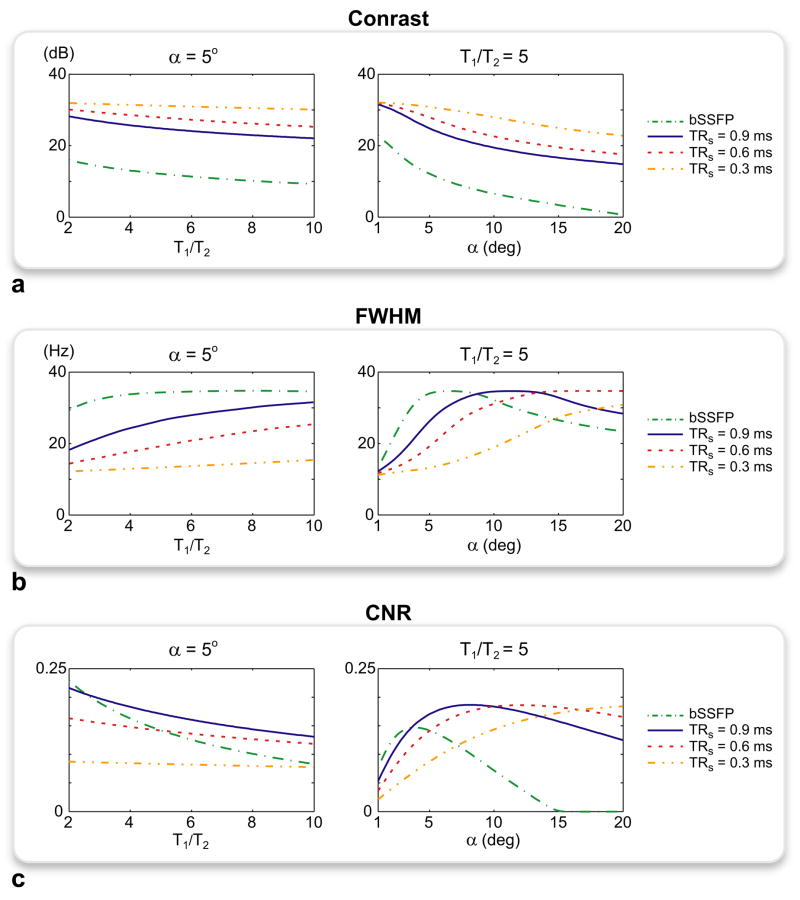Figure 3.
The spectral responses of the bSSFP and ATR SSFP sequences were simulated for a range of tip angles and T1/T2 ratios. For ATR-SSFP, TRs = 0.3, 0.6, and 0.9 ms were used. The positive contrast, full-width at half-maximum (FWHM) of the off-resonant peaks, and CNR were plotted with respect to T1/T2 for α = 5°, and α for T1/T2 = 5. a: The peak positive contrast (equivalently, the suppression ratio) is displayed in dB units. PARTS achieves substantially higher contrast compared with bSSFP at all parameter values. When TRs is shortened below 0.9 ms, the contrast is further increased due to improved suppression. b: The FWHM of the peaks decreases for smaller α and T1/T2, reducing the mean off-resonant signal. c: The normalized positive CNR is assumed to be proportional to the difference between the mean off- and on-resonant signals. PARTS (TRs = 0.9 ms) mostly yields higher CNR compared to bSSFP except for α < 2°, where both sequences have significantly reduced and similar CNR. Although bSSFP and PARTS (TRs = 0.9 ms) yield the highest CNR at α ≈ 5°, the optimal tip angles are slightly increased with TRs = 0.6 and 0.3 ms due to the increased background suppression.

